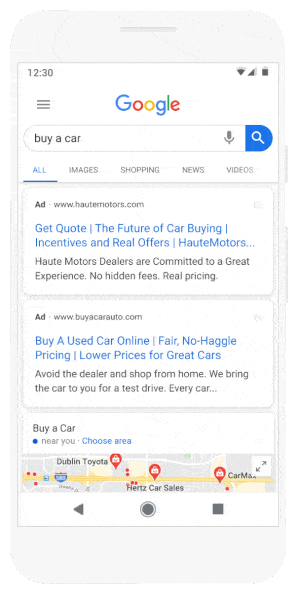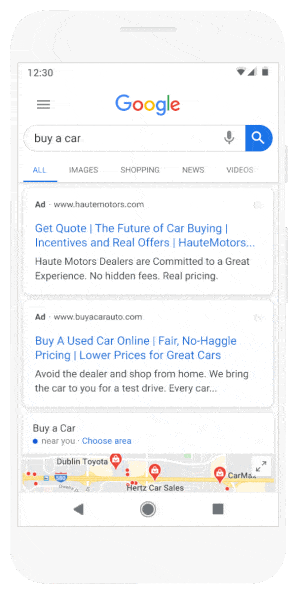Previously in beta, Google Ads announced its updated lead form extension which pops up a form directly from a click on an ad in search, Video, and Discovery. If opted into, it means that when a user clicks a headline from an ad, the lead form appears in the SERP instead of requiring users click through to an advertiser’s landing page to complete a form. After the form completion, the lead can choose to go to the advertiser’s site or continue searching on Google.

Benefits. The related help article states that the benefits includes generating more leads, increasing conversions, and improved ad engagement. “After a potential customer submits a lead form, they can choose to visit your site or return to the search results page,” says the updated support doc.
Pulling the data. Google states that advertisers can manually download the last 30 days of lead data directly from Google Ads or create a webhook to have leads moved directly into a CRM. Beta testers told Search Engine Land that it’s critical to create a cadence to pull the leads and hand them off to sales if there isn’t a webhook setup.
Who can use it. The help document also states the requirements for advertisers to be able to implement the new lead form extensions. Requirements include a history of policy compliance, a privacy policy to include in the lead form, and an Ads account in an eligible vertical (sensitive verticals are not eligible for lead form extensions).
For those hoping to use lead form extensions in Video or Discovery have to be spending over $50,000 USD (or the equivalent) to be eligible.
Why we care. With more advertising platforms moving toward changes and automation that gives advertisers less control, it’s especially interesting that Google Ads is enhancing an option where a user would potentially never leave the SERPs. This has been a concern for a while on the SEO side, but lead form extensions expand this move into paid advertising.
Lead form extensions may be beneficial to certain industries or target keywords that are further down the funnel. Google’s example of automotive is one use case that could see an increase in leads from the in-SERP forms, but others may want to tread carefully and test before diving in fully.
It’s also critical to examine where users are in the customer journey before using a lead form extension as more awareness-stage audiences may not be ready to convert yet.
The post In-SERP lead forms convert Google Ads users without a click-through appeared first on Search Engine Land.
Source: IAB

